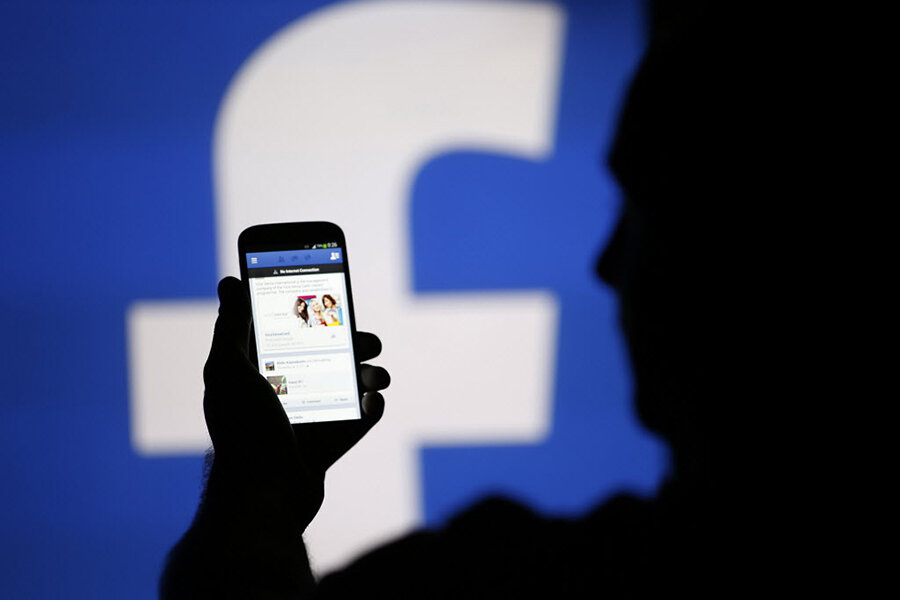Facebook to prioritize updates from friends. Will that hurt the news media?
Loading...
Is Facebook’s growing importance as a news source getting in the way of its original focus?
That’s a central question underlying the site’s decision, announced Wednesday, to make changes to its News Feed. The company will prioritize content that is shared by a user’s friends on the site by moving it closer to the top of a user’s feed.
The changes, which are laid out in a set of “values,” come at an eventful time for the site. For news organizations, there is a pressing concern about whether the changes could impact how many people read and respond to their content posted on Facebook. A controversy last month about the site’s trending news feed also highlights what some see as a broader concern: very little is publicly known about the algorithm that determines what each user sees on the site.
Wednesday's news, and the older bias allegations, "[remind] us that there’s a human element involved in machine learning, there’s a human element involved in these algorithms," Amy Mitchell, director of journalism research at the Pew Research Center, tells The Christian Science Monitor.
With 62 percent of adults getting news on social media, and 66 percent of Facebook users getting news from the site, according to Pew, changes to how Facebook displays information are “certainly going to impact what gets put in front of a fairly significant segment of our population,” says Ms. Mitchell.
Facebook says the decision is an effort to reinforce its core values of helping users connect with their friends and family, while other goals, such as to “inform” and “entertain” users (including through news coverage) come second.
“We think more, spend more time and work on more projects that try to help people express themselves with their friends or learn about their friends or have conversations with their friends,” Adam Mosseri, the Facebook manager in charge of News Feed, said in an interview with the New York Times.
The Times’ Farhad Manjoo described the company’s announcement as a “shock to everyone in the media business.”
Facebook, by contrast, says that its change isn’t a large-scale overhaul. However, it has told news sites and other businesses that traffic could decline for businesses that depend primarily on people interacting with content on their own pages, rather than content shared by Facebook users themselves.
Mr. Mosseri cast the changes as an attempt to continue being transparent about what users see on the site, using language that mirrors Facebook's response to allegations that its news feed suppressed conservative news stories.
“We are not in the business of picking which issues the world should read about. We are in the business of connecting people and ideas – and matching people with the stories they find most meaningful,” he wrote in a blog post on Wednesday. “We don’t favor specific kinds of sources – or ideas. Our aim is to deliver the types of stories we’ve gotten feedback that an individual person most wants to see.”
But questions about transparency and how its employs the data users share on the site don’t appear to be going away anytime soon.
Recently, the site faced questions about whether it had employed users’ smartphone location data to suggest “People You May Know” in real life. The scenario that alarmed many users, but a spokesperson clarified on Tuesday that Facebook had only tested the use of location data for a temporary period at the end of 2015.
Fusion’s Kashmir Hill described the retraction as “reportorial whiplash,” while a Facebook spokesperson told the Monitor that the company couldn’t comment on whether it had used location data or not.
Mitchell, of Pew, pushes back against broader concerns that social media is wholly driving a trend toward political polarization, noting that Pew’s research has found that "very very few people live in a true silo either in social media or in social connections [offline] more broadly."
For news organizations, however, a reliance on social media as a key source of readers and partnerships such as the site’s Instant Articles, a feature that allows news organizations to host their stories on the site, are likely here to stay.
“What we have found is that most of these social media sites, whether it’s Facebook or Snapchat or Twitter, didn’t start with news as a primary element at all that they were hoping to offer to people,” Mitchell says.
Instead, she adds, “Over time, as they’ve become mini worlds that people can live in, news has been brought in, both from the work of people in those technology companies and from what users connect to when they’re on those sites.”





